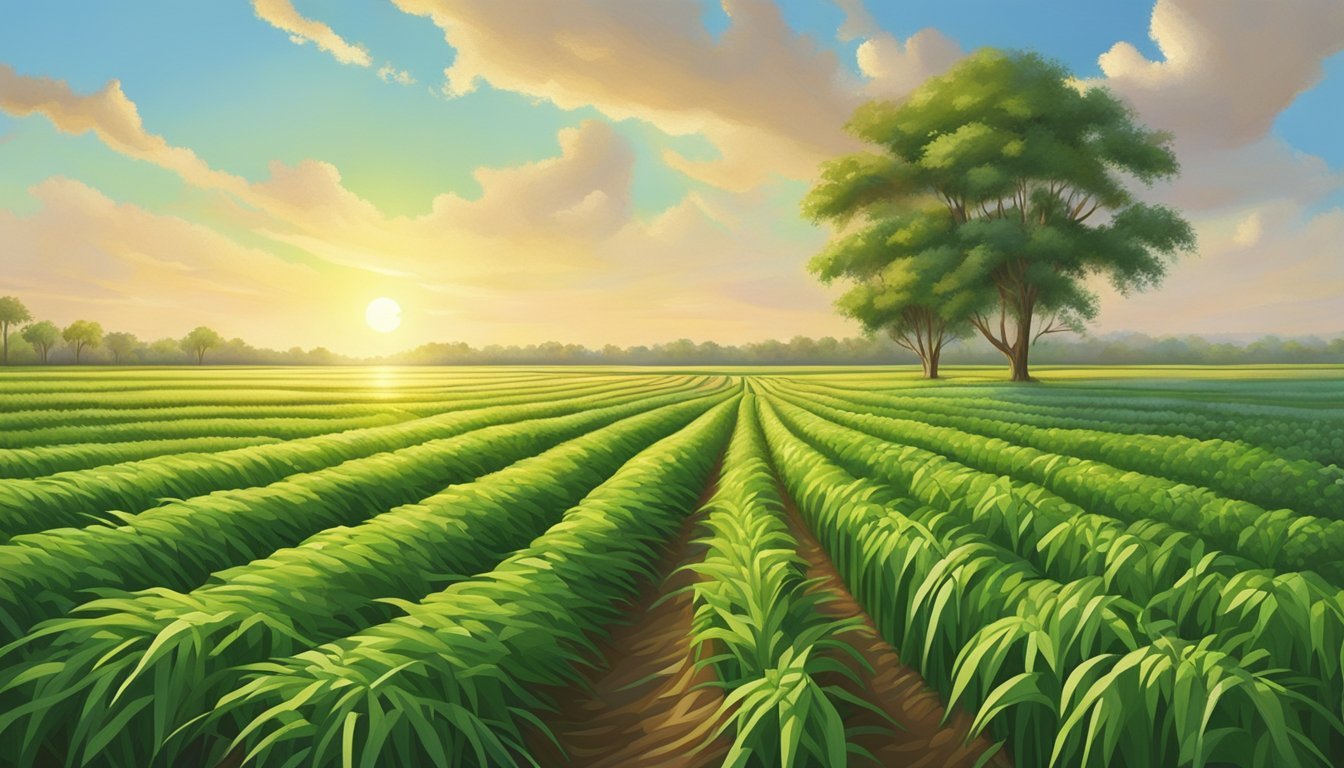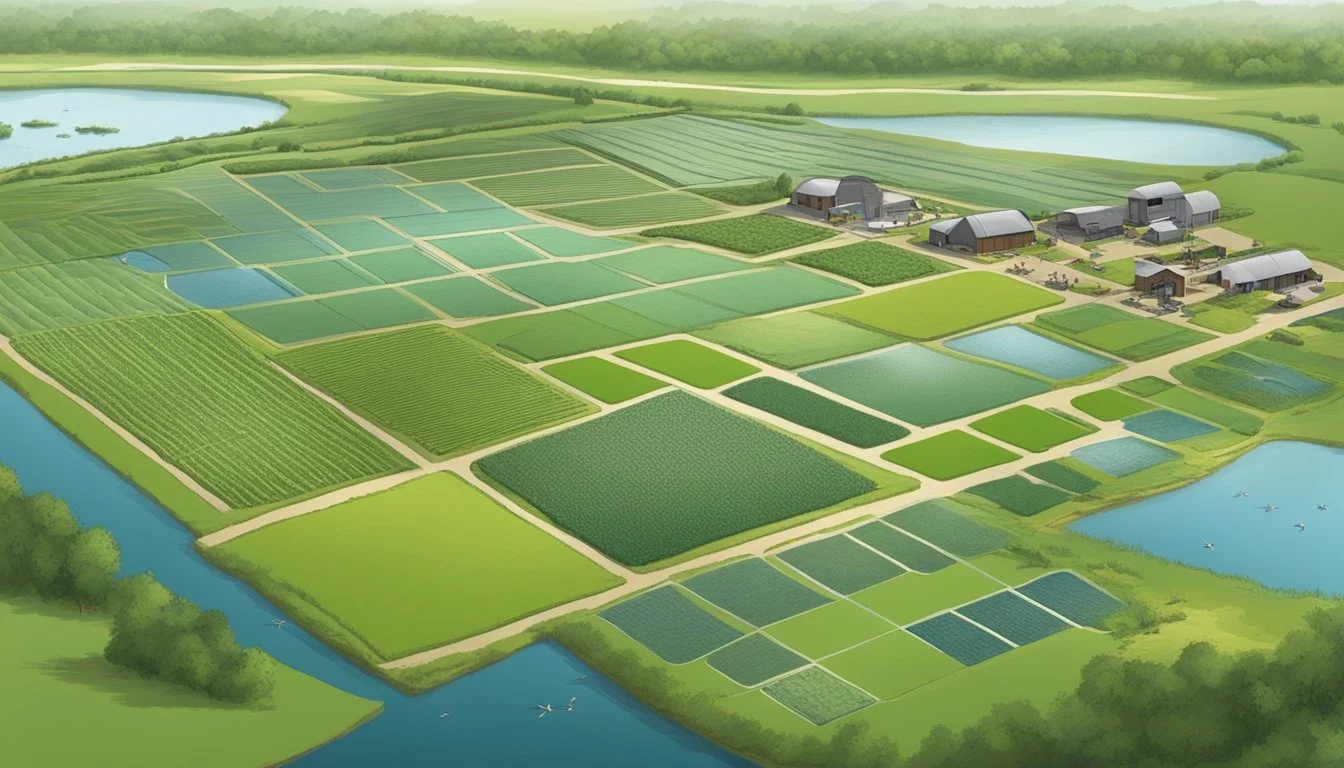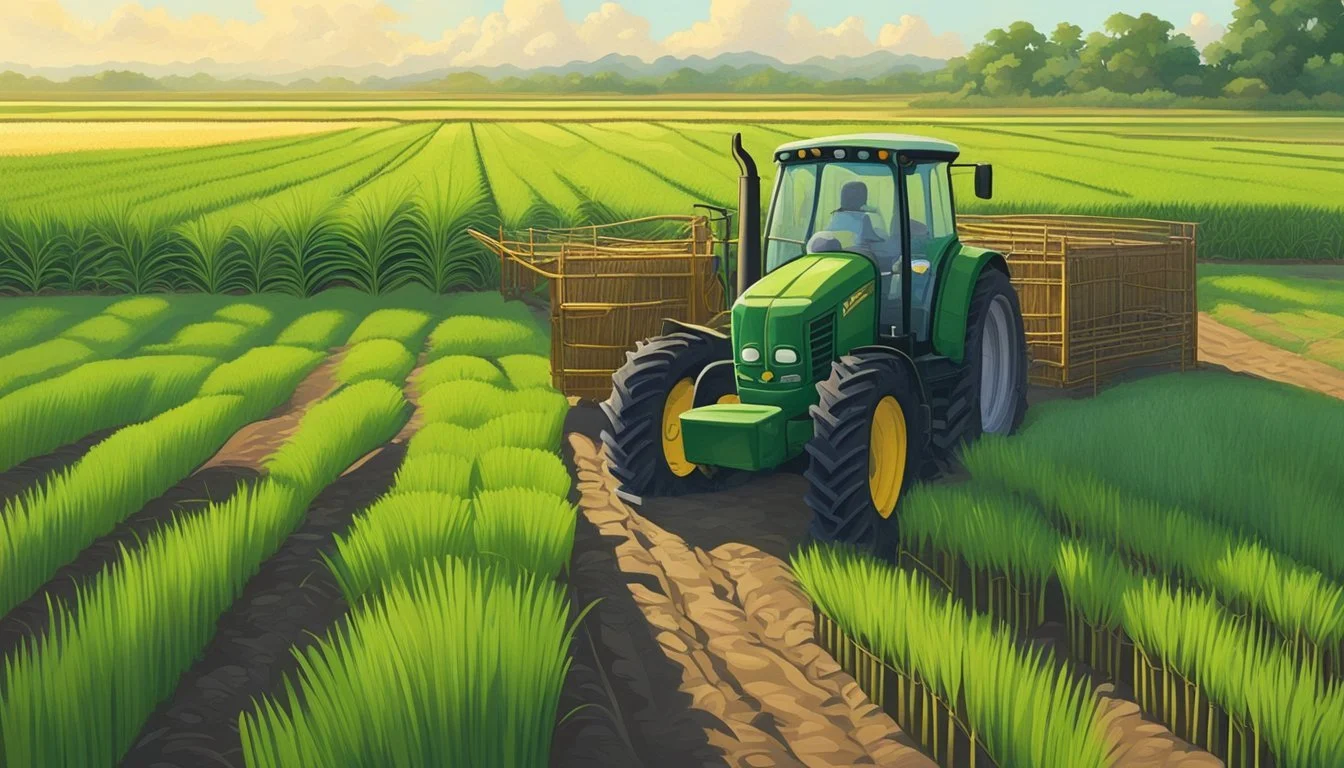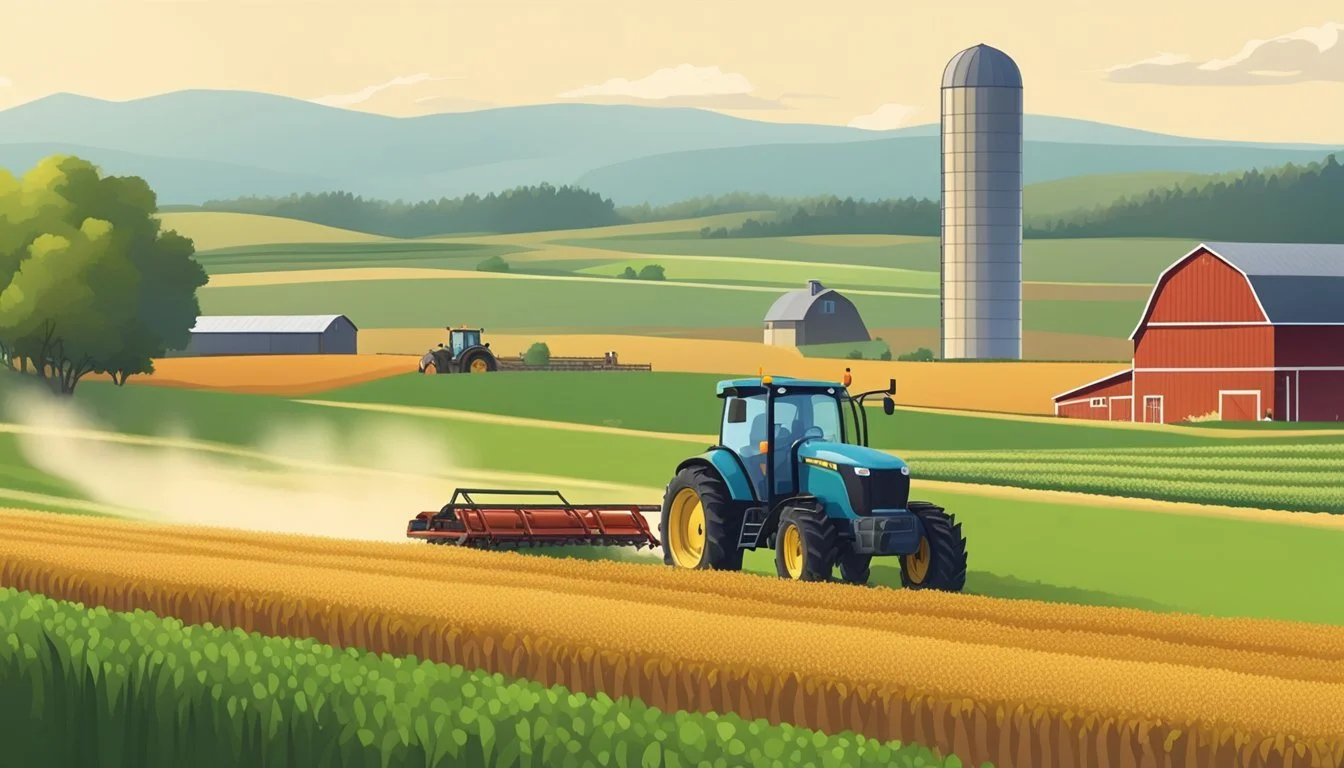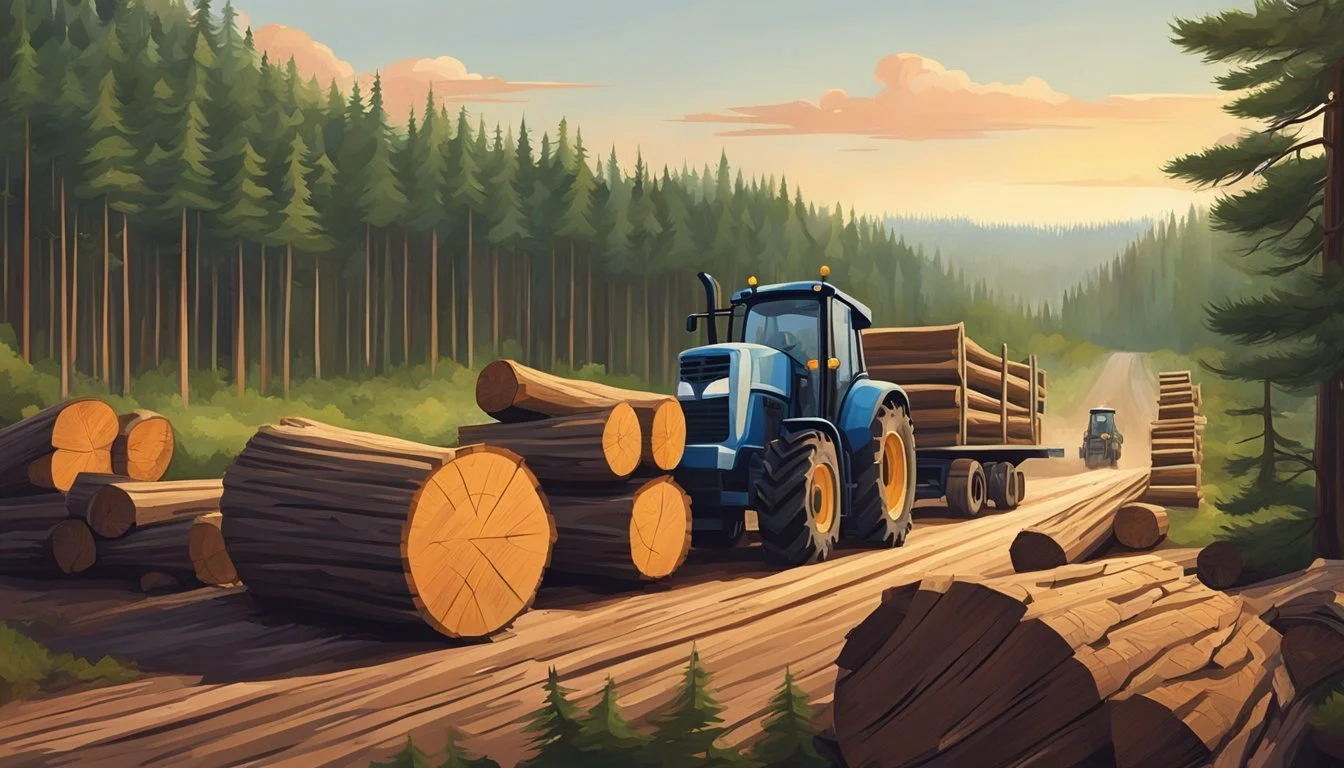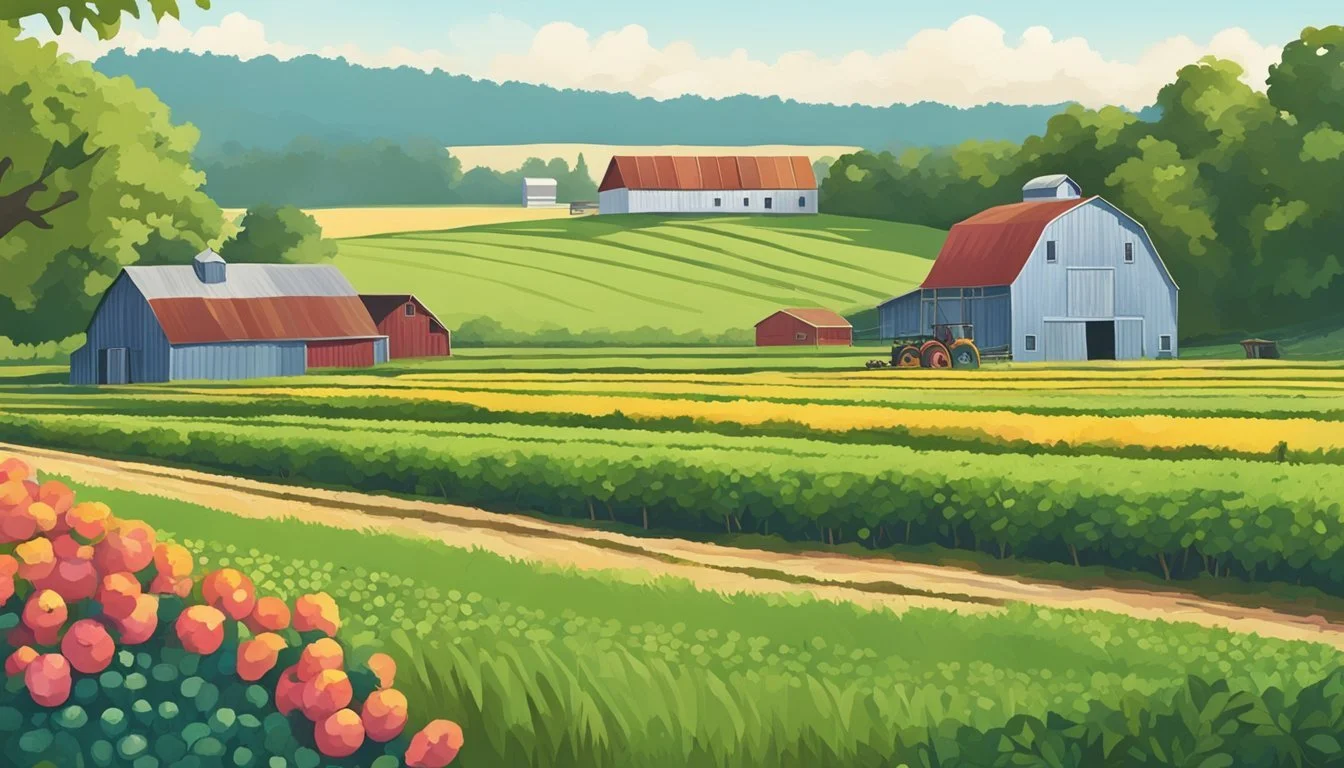Guide to Farming in Louisiana
Essential Strategies for Success
This Article is Part of Our State by State Farming Guide
Farming in Louisiana presents unique opportunities and challenges due to its diverse climate and geography. The state's agricultural sector thrives with a mix of crops and livestock due to the subtropical climate, ample rainfall, and rich alluvial soil. Louisiana's farmers typically engage in the cultivation of a wide range of vegetables, fruits, and other agricultural products. The farm calendar is carefully planned to align with regional weather patterns, and specific planting guides, such as those from the LSU AgCenter, are indispensable tools for maximizing yield.
Agriculture in Louisiana is shaped by the state's hardiness zones, which are mapped out by the USDA and indicate the annual average minimum temperatures of specific areas. These zones influence planting times and crop selection, ensuring farmers make educated decisions about what to plant and when to plant it. Root, fruit-bearing, and leafy vegetables each have their own ideal conditions for optimal growth. Being aware of these conditions is crucial for success, as proper timing helps to evade common challenges like frost and pest problems.
Guides to farming in Louisiana often emphasize the importance of location and timing. Essential considerations include finding sunny spots for fruit-bearing crops like tomatoes, peppers, and squash, which need full sunlight to produce well, while leafy vegetables can manage with more shade. Awareness of the local environment and adherence to seasonal planting guides are key factors facilitating successful farming endeavors in the state. With preparation and the right knowledge, Louisiana's agricultural potential can be fully realized.
Louisiana's Agricultural Landscape
Louisiana's diverse agricultural landscape is shaped by its varied climatic zones and distinctive soil types, which in turn influences the range of agricultural products cultivated across the state.
Climatic Zones and Soil Types
North Louisiana is characterized by a humid subtropical climate with mild winters and hot summers. The soil composition here varies, but it often includes thick, fertile soils that are ideal for row crops and pastureland. In contrast, South Louisiana's subtropical climate includes warm winters and very humid summers, creating conditions favorable for sugar cane and rice.
The state can be generally divided into zones ranging from 6 to 10, which are important for determining the planting seasons and suitable crops. The soil types can be broadly classified as:
Alluvial soils: Found along rivers and in deltas, these are fertile and excellent for crops like cotton and soybeans. (how long do soybeans last?)
Loess soils: Primarily in the uplands of the Mississippi River, known for supporting agriculture and forestry.
Claypan soils: Common in northeastern Louisiana, these soils are less permeable and may pose drainage challenges.
Key Agricultural Products
Louisiana's main agricultural products reflect its regional diversity:
North Louisiana:
Cotton
Corn
Soybeans
Poultry
South Louisiana:
Sugar cane
Rice
The state's soil types are particularly well-suited for the aforementioned crops, with loamy soils contributing to the production of sweet potatoes and the alluvial soils of the river deltas nurturing sugar cane fields. Louisiana consistently ranks as a top producer in the nation for sugar cane and rice, with considerable acreage dedicated to these crops.
Crops and Commodities
Louisiana's agricultural landscape is diverse, encompassing a variety of crops and commodities that contribute significantly to both the state and national economies. The state is a major producer of sugarcane, rice, corn, and cotton, as well as a variety of vegetables.
Sugar and Sugarcane Production
Louisiana is one of the largest producers of sugarcane in the United States, where the cultivation of this commodity thrives in the state's rich, alluvial soil. Sugar production is critical to the state's economy, with substantial yield and quality being key focus areas to maintain its position as a top producer.
Harvest Season: Typically from October to January
Number of Farms: Over 400 sugarcane farms
Rice Cultivation and Varieties
Rice farming in Louisiana is integral to the state's agricultural output. The state offers ideal growing conditions for rice with its wet, marshy environment. Farmers produce several varieties of rice, ensuring versatility in grain choices for different markets and consumer needs.
Main Rice Varieties: Long-grain, medium-grain, and jasmine rice (how long does jasmine rice last?)
Planting Info:
Seed Planting: March to April
Harvest Time: August to September
Corn, Cotton, and Soybeans Growth
In addition to rice and sugarcane, Louisiana boasts large-scale production of corn, cotton, and soybeans. Corn is pivotal among the most profitable crops, being grown for a variety of purposes, while cotton production includes the upland variety, which is used in various consumer goods.
Corn:
Planting: February to March
Harvest: July to August
Cotton:
Planting: April to May
Harvest: August to November
Vegetable Cultivation
Aside from staple crops, Louisiana farmers grow a wide range of vegetables which include tomatoes, peppers, squash, lettuce, broccoli, cabbage, okra, and sweet potatoes. Notably, sweet potatoes are a significant crop, being root vegetables with a hearty presence in the market.
Vegetable Growth Periods:
Tomatoes/Peppers: Plant in spring, harvest in summer
Squash/Lettuce: Plant in spring, harvest in early summer
Broccoli/Cabbage: Plant in late summer, harvest in fall
Okra/Sweet Potatoes: Plant in spring, harvest from late summer into fall
Greens, including mustards and turnips, are commonly planted in fall for winter harvest.
Through these commodities, Louisiana's farming sector remains a robust and vital component of the state's economic framework, with a focus on sustainability and high production standards.
Livestock and Aquaculture
Louisiana's agricultural landscape thrives on diverse livestock farming and pioneering aquaculture practices. The state's farms contribute significantly to the U.S. economy through both cattle farming, with a focus on beef and dairy production, and the rapidly expanding crawfish aquaculture industry.
Cattle Farming and Dairy Production
Cattle farming in Louisiana is geared towards the production of both beef and milk. The cattle industry is structured to optimize meat production while also managing dairy farms that supply milk to both local and national markets. Beef cattle operations focus on developing breeds suited to the region's climate, like the heat-tolerant Brahman, and employ pasture management strategies to enhance meat yield. Dairy farms, although fewer in number, implement meticulous breeding and feeding programs to maximize milk production.
Breeds: Brahman, Holstein, Jersey
Products: Beef, Milk
Management Focus: Breeding, Feeding, Pasture
Crawfish Farming Practices
Crawfish farming has become a hallmark of Louisiana's aquaculture, with crawfish ponds dotting the landscape. Farmers employ best management practices to improve the sustainability and productivity of crawfish production. Techniques include rotating crops with rice farming to optimize pond use, careful water management to maintain ideal conditions, and monitoring crawfish health to ensure high-quality yields.
Pond Management: Crop rotation, water quality control, stocking density
Production Cycle: Harvest typically runs from November to June
Sustainability: Practices updated as environmental conditions and regulations evolve
Crawfish production is an evolving sector, with resources such as LSU AgCenter providing continuous support and updated guidelines to help farmers navigate changes in market demand, input costs, government regulations, and water availability.
Agricultural Management
Agricultural management in Louisiana combines proven cultivation strategies and advanced pest control techniques to ensure a thriving agroecosystem. Adequate water management and disaster preparedness are integral to sustaining the region's agricultural output.
Cultivation and Planting Techniques
Farmers in Louisiana follow precise planting dates and cultivation practices tailored to the local climate and soil conditions. For optimal growth, aligning the planting techniques with the specific needs of each crop is essential. Rice, for example, demands well-prepared seedbeds and timely transplantation to maximize yields.
Pest and Disease Control
Disease management involves routine monitoring and swift response to signs of crop infection to prevent widespread damage. Pest control strategies are designed to target common threats such as the Mexican Rice Borer, Rice Stink Bug, and Rice Water Weevil, utilizing integrated pest management tips from resources like the LSU AgCenter guides to minimize the impact on beneficial insects and the environment.
Irrigation and Water Management
Efficient use of irrigation water is critical for crop production in Louisiana. Flooding is a common irrigation practice for crops like rice and requires precise water level control to prevent both over-saturation and drought stress, ensuring healthy growth and maximizing water-use efficiency.
Disaster Preparedness and Response
Recognizing natural disasters can profoundly impact agricultural areas, farmers employ management strategies to mitigate potential losses. Actions include understanding disaster effects, preemptively reinforcing infrastructure, and having clear plans for post-event recovery to maintain production and protect investments.
Economic Aspects of Farming
In Louisiana, understanding the economic dimensions of farming is crucial, including market trends, effective agricultural business strategies, and the balance between economic gains and environmental health.
Market Trends and Consumer Demand
The prosperity of Louisiana's agriculture is intertwined with market trends and consumer demands. In the Delta region, farms are witnessing higher revenues than the state's average, suggesting regional disparities in economic success. Farm operations must adapt to shifting consumer preferences and market demands to maintain and grow their revenue streams. For instance, local markets are influenced by global commodity prices and consumer demand for sustainable practices.
Agricultural Business and Planning
Agricultural business and planning are essential for farm profitability. In Louisiana, strategic planning involves assessing farm operation costs, yield expectations, and choosing appropriate crops. Farmers often utilize resources such as the USDA's data and the LSU AgCenter's tools to plan their production cycles. Successful agribusinesses invest in value-added processing, which has great potential for enhancing the state's agricultural economy.
Resources for Planning:
USDA National Agricultural Statistics
LSU AgCenter's Economic Budgets and Models
Environmental and Economic Sustainability
The agricultural industry in Louisiana must consider the delicate balance between environmental conditions and economic sustainability. Practices that ensure the long-term health of the land lead to sustainable prosperity. With most production coming from large farm operations, these entities have a significant impact on environmental health. They are encouraged to adopt methods that protect natural resources, while government agencies and educational institutions provide guidance and support for sustainable practices.
Key Sustainability Factors:
Soil conservation
Water resource management
Ecologically responsible pest and weed control
Forestry and Fiber Production
In Louisiana, forestry plays a significant role in the state's agricultural profile. The state's forestlands, encompassing approximately 14.9 million acres, represent 50% of its land area. This substantial coverage underscores the importance of forestry as both an economic driver and an environmental asset.
Key Wood Fiber Production Facts:
Tree Crops: Involves planting or seeding pine and hardwoods.
Costs: Include seedlings, seed, labor, and, if necessary, site preparation.
Vegetation Management: Incorporates post-planting measures to control undesired undergrowth within the tree crop's first growing season.
Louisiana's Department of Agriculture and Forestry and the associated producers are deeply invested in ensuring that wood fiber production maintains high standards. Emphasizing sustainability, they aim to balance wood fiber production with other land values, such as recreation, wildlife habitat, watershed protection, and air quality.
Producer and Forester Practices:
Sustainability: A commitment to sustainable wood fiber production to ensure ongoing resource availability.
Technical Assistance: Provision of expert support to enhance the state's soil and water resources, benefiting both forestry and agriculture.
The fiber produced from Louisiana's forests contributes to a diverse array of products. The forestry sector involves foresters and producers working collaboratively. Foresters are tasked with managing the growth, harvesting, and replenishment of tree crops, while producers are responsible for processing the fiber and bringing it to market.
Forestry's Cultural Impact:
Forestry perpetuates Louisiana's rich cultural heritage, integrating the state's unique history with its present-day agricultural practices.
It is through these concerted efforts that Louisiana maintains robust forestry and fiber production sectors, driven by experienced foresters and forward-thinking producers.
Regulatory Framework and Support Networks
In Louisiana, a robust network of institutions and policies guides the agricultural sector. These frameworks ensure compliance with environmental and safety standards while also offering educational and technical support to farmers.
Role of the LSU AgCenter
The LSU AgCenter is instrumental in Louisiana’s agricultural community, providing research-based information, tools, and support. It conducts vital research that aids in the development of the state's agricultural industries, like emerging markets for crops such as hemp. As a bridge between farmers and new scientific knowledge, the AgCenter helps to ensure that agricultural practices remain sustainable and competitive.
Policies and Guidelines by USDA
Farmers in Louisiana must adhere to stringent policies and guidelines set forth by the United States Department of Agriculture (USDA). These regulations encompass a wide array of topics, from soil conservation to crop subsidies, to ensure that agricultural activities are carried out responsibly and with regard for the environment. Documents issued by the USDA offer clarity on federal agricultural laws to which state regulations must align.
Commissioner of Agriculture and Forestry
The Commissioner of Agriculture and Forestry oversees the application of state laws regarding agriculture. This office functions to sustain the cultural heritage of Louisiana’s agriculture by enforcing regulations and supporting the state’s agribusinesses. It plays a crucial role in managing the intersection between agriculture, forestry management practices, and the broader goals of economic development in the state.
Community and Culture in Louisiana Agriculture
Louisiana's agricultural community thrives on a rich cultural heritage that influences the practices and traditions of the land. The blend of French, Spanish, African, and Native American heritages forms a unique agricultural tapestry. This diversity is mirrored in the state's farming techniques, crop selections, and food celebrations that promote a sense of communal joy and shared identity.
Agricultural activities in Louisiana often go beyond mere cultivation and harvesting; they are festivities that bring people together. Cultural practices such as the famous crawfish boils and rice harvesting festivals highlight the social aspects of farming, embracing a joyful fusion of work and play.
The Commissioner for Louisiana plays a vital role in fostering this environment, advocating for the state's agricultural interests and ensuring that farming communities are represented and supported. They are instrumental in reinforcing Louisiana's position in agriculture by upholding both cultural traditions and modern agricultural practices.
In terms of community impact, local agriculture supports a system of sustainable practices and farmer networking. This support is evident in the initiatives like those from the LSU AgCenter, which emphasize education, innovation, and the improvement of lives through a combination of classroom teaching and hands-on training.
Cultural Aspect Influence on Agriculture French and Spanish Culinary crops, wine production African Crop variety, food culture Native American Sustainable land practices
The culture deeply ingratiates itself within Louisiana's agricultural framework, ensuring that the state's farming is as vibrant and colorful as its history.
Resources and Further Reading
For aspiring and existing farmers in Louisiana, there is a wealth of information available to enhance their agricultural knowledge and skills. The Louisiana State University (LSU) AgCenter is a central resource that offers various documents and guides on regional farming practices. Individuals can access the Publications Catalog for an extensive overview of the state's agricultural sectors, including analytics of the value of agriculture in Louisiana.
Farmers with less than 10 years of experience can benefit from the Grow Louisiana initiative, which focuses on sustainable horticulture training for small to mid-size farm operators. This program represents a collaborative effort among academic, cooperative extension, and nonprofit organizations to strengthen the state's agricultural community.
Listed below are valuable resources for further reading and support:
LSU AgCenter:
Sustainable Agriculture:
Beginner Farmer Training Programs
Sugarcane Soil Fertility Recommendations for 2024
Crop Varieties:
2024 Cotton Varieties for Louisiana
Disaster Preparedness:
Lesson 1: What Is a Natural Disaster?
Louisiana Ag in the Classroom:
Lesson Plans: Organized by grade and subject, these plans integrate agriculture with core subjects like science, social studies, ELA, and math.
Ag Literacy 2024: A volunteer program promoting agricultural education through scheduled readings in schools.
Farmers looking to deepen their understanding of agriculture can utilize these documents and support systems as a foundation for a thriving farm operation in Louisiana’s unique agricultural landscape.
Did You Know?
Louisiana's Rich Agricultural Landscape: One might not immediately think of gold in the realm of farming, but Louisiana's agricultural industry is considered 'gold' due to its substantial contribution to the state's economy and the variety of crops it produces.
Variety is the Spice of Life: When it comes to flavor, Louisiana is renowned for its culinary excellence, which is greatly supported by its diverse agricultural sector. From sugarcane to rice, the state's farmers are adept at growing a wide array of crops that contribute to the characteristic flavors of Louisiana cuisine.
A Parish System at Work: In managing agricultural affairs, Louisiana operates on a unique parish system rather than counties, like most states. This allows for tailored management practices suited to the local environment of each parish.
Farming Support Systems: Newcomers to agriculture receive strong support in the state, with resources available through local networks such as the LSU AgCenter, which offers vital information and guidance to aspiring farmers.
Stewardship and Sustainability: Farmers in Louisiana are increasingly embracing sustainability to make their operations more efficient and environmentally friendly. By doing so, they ensure their farms can serve future generations.
A Hub for Processors: The state not only provides for its residents but also hosts a network of processors, converting raw agricultural commodities into products ready for local and national markets.
Key Resources for Louisiana Farmers LSU AgCenter Louisiana Land Conservation Assistance Network Louisiana Agriculture in the Classroom


